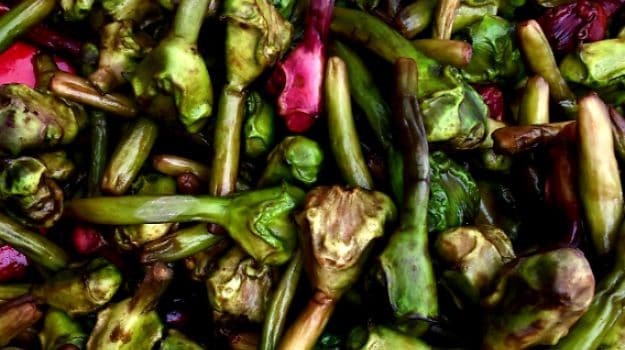 Image Credits: Instagram/thecuriousjalebi
Image Credits: Instagram/thecuriousjalebi
This Navratri 2016, eat singhara and reap the benefits.
Also known as water chestnut, buffalo nut, bat nut, ling nut or Singhara, it is actually the seed of the fruit of a floating aquatic plant. Singhara is grown in sluggish water or fresh water lakes in India. Come Navratri and one can see cart loads of this fruit being sold along the road side. The fruits are eaten as such or dried and ground to a flour. It is a phalahar and is an integral part of fasting meals.
This delicious and nutritious fruit is gluten free, cholesterol free and a source of energy, protein, phosphorus and fiber. 100 gm of dried water chestnut provides 330 Kcal, 13.4gms of protein, merely 0.8gms of fat and 440mg of phosphorus. So even if it is available only for a month or two, eat up and get its benefits this season.
8 Reasons Why You Should Eat Singhara During its Short Season
1. Its energy quotient is high, making it a good replacement from regular grains.
2. Being gluten free means it relieves the digestion process and gives it a break from the regular gluten rich grains.
3. It is a good source of phosphorus. This essential mineral is very important for our energy metabolism, it is an important part of our DNA, and it plays a crucial part in maintaining bone and teeth health. Phosphorus is also involved in maintaining the pH of our blood.
4. Water chestnuts have excellent antioxidant and anti-cancerproperties. They are rich in polyphenols that are known to be strong scavengers of free radicals that harm our body.
5. The fiber content of Singhara flour is another nutritional benefit why you should add it to daily meals. Fiber, as we all know, is protective against most lifestyle diseases. Increasing the fiber content of your meals has a direct correlation to optimizing health.
6. Recent research has indicated that the humble Singhara is anti–inflammatory, the green and red variety have anti-bacterial effects.
7. The Folate content of Singhara is high- 110micrograms /100gm, making it a must for ladies planning their pregnancy and pregnant mothers. Folate is essential for protecting against congenital birth defects. It is also important to protect against anaemia.
8. Its rich potassium content and low sodium content is said to help water retention in the body.
Singhara fruits can be eaten as such or dried and ground to Singhare ka atta. While buying fresh Singhara, try to pick out the ones with smooth skin and no pulpy areas. Buy a little extra so that you can discard the bad ones. Fresh singharas need to be peeled before eating. They can be refrigerated for up to two weeks. They can be boiled, blanched or added to stir fries while cooking. Singhara atta should be stored in an air tight container in a cool and dark place. Singhara is not an exotic food, hence it has been given very little importance. But like many of our traditional foods, it is a power house of health and wellness. This is another reason to look back to your culinary roots.










